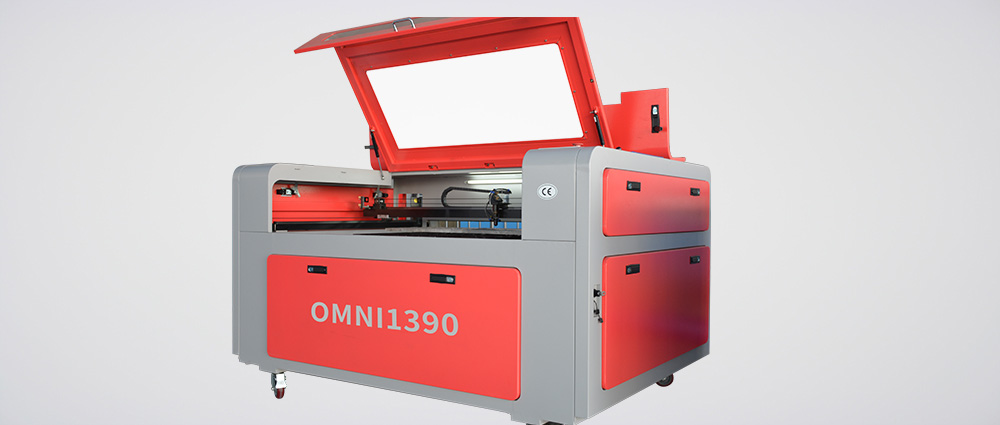
Manufacturing has experienced remarkable advancements over the years, with technology playing a pivotal role in boosting efficiency and productivity. Among the latest innovations driving this transformation is OMNICNC's cutting-edge CO2 laser machines. These state-of-the-art machines have redefined traditional manufacturing processes, delivering unmatched precision, speed, and versatility. Join us as we delve into how OMNICNC's CO2 laser machines are reshaping the landscape of manufacturing, setting new standards for excellence and performance.
The Technology Behind CO2 Laser Machines
CO2 laser machines are at the forefront of modern manufacturing, utilizing cutting-edge technology to deliver exceptional results. These machines operate by emitting a high-powered laser beam that is generated from a carbon dioxide gas mixture. The laser beam is then focused through a series of mirrors and lenses to create a concentrated heat source that can cut through a wide range of materials with precision and accuracy.
Key features of CO2 laser machines include:
- Precision cutting capabilities
- High cutting speeds
- Versatility to work with various materials
- Minimal material wastage
- Reduced need for secondary finishing processes
Applications of CO2 Laser Machines in Manufacturing
CO2 laser machines have a wide range of applications across various industries, making them incredibly versatile tools for manufacturers. Some of the key applications of CO2 laser machines in manufacturing include:
1. Metal Fabrication
- Precision cutting of metals such as steel, aluminum, and copper
- Engraving and marking metal surfaces
- Creating intricate designs and patterns on metal products
2. Woodworking
- Highly detailed cutting and engraving of wooden products
- Creating custom furniture pieces with intricate designs
- Precision cutting of wood for construction and carpentry
3. Textile Industry
- Precision cutting and engraving of fabrics and textiles
- Creating custom designs on clothing and accessories
- Automating the process of cutting patterns for garments
Advantages of Using CO2 Laser Machines in Manufacturing
The adoption of CO2 laser machines in manufacturing offers numerous advantages that have transformed the way products are designed and produced. Some of the key advantages of using CO2 laser machines include:
1. Improved Precision and Accuracy
- CO2 laser machines offer unparalleled precision in cutting and engraving, ensuring seamless execution of designs.
- Highly accurate results eliminate the need for manual adjustments, reducing the margin of error in manufacturing processes.
2. Increased Efficiency and Productivity
- CO2 laser machines operate at high speeds, enabling rapid production of parts and components.
- Automated cutting processes reduce production time, leading to increased efficiency and productivity in manufacturing.
3. Cost-Effectiveness
- Minimal material wastage and reduced need for secondary finishing processes help lower production costs.
- CO2 laser machines offer long-term cost savings through their efficiency and reliability in manufacturing operations.
Future Trends in CO2 Laser Technology
As technology continues to evolve, the future of CO2 laser machines in manufacturing looks promising, with several emerging trends shaping the industry. Some of the future trends in CO2 laser technology include:
1. Integration of AI and Automation
- AI-powered systems will enhance the capabilities of CO2 laser machines, enabling autonomous operation and real-time monitoring of manufacturing processes.
- Automation will streamline production workflows, leading to increased efficiency and consistency in output.
2. Advancements in Material Compatibility
- CO2 laser machines will continue to expand their compatibility with a wider range of materials, including composites and advanced alloys.
- Enhanced material compatibility will open up new possibilities for product design and customization in manufacturing.
3. Sustainability Initiatives
- CO2 laser technology is inherently more environmentally friendly compared to traditional manufacturing processes, with lower energy consumption and reduced waste generation.
- Manufacturers are increasingly adopting CO2 laser machines as part of their sustainability initiatives to minimize their carbon footprint and environmental impact.
Overall, CO2 laser machines are revolutionizing manufacturing by offering precision, speed, and versatility that elevate the production of goods across various industries. With ongoing advancements in technology and a focus on sustainability, the future of CO2 laser technology holds exciting possibilities for the manufacturing sector.






